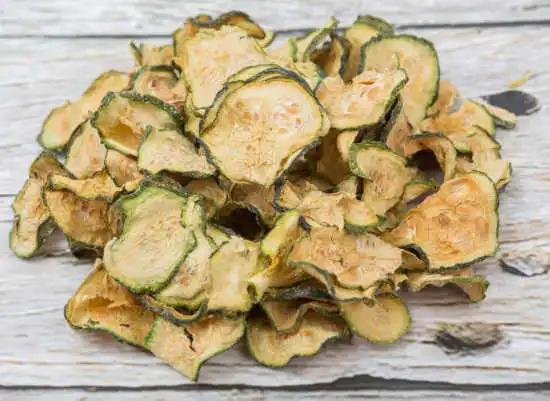Squash is considered a no-fuss seed variety that can be a prolific producer if given the right elements. Since it is one of the easiest veggies to grow, many of us quickly get overloaded with zukes. Aside from all of the delicious zucchini boat recipes you can make, zucchini has a few more uses in the kitchen that you probably haven’t thought of.
During the 1940s when the world was rationing, Amish flour or zucchini flour gained popularity. This type of flour is a staple in Amish and Mennonite households and with wheat prices soaring these days, this trick may come in handy!
Zucchini flour can be used to make flatbreads or Bannock, and sweets, like brownies! It also can act as a natural thickening agent for gravies and can be used to bread meat and fish.
What Kind of Squash Do You Use?
Many popular types of squash can be used to make flour: zucchini, acorn, pumpkin, and even sweet potatoes. Using zucchini flour literally cuts your regular flour usage down by 1/3! For example: if a recipe calls for 1 cup of all-purpose flour, you can replace that with a 1/3 cup of zucchini flour and 2/3 cup of all-purpose flour because it is not a one-to-one replacement.
While this is not considered a superfood, zucchini has some nice nutritional benefits. Zucchini is rich in water and fiber, two compounds that promote healthy digestion by reducing constipation and symptoms of gut disorders. Moreover, a cup of zucchini is also brimming with vitamin C, potassium, and magnesium. In particular, its ample vitamin A content may support your vision and immune system. It also contains small amounts of iron, calcium, zinc, and several other B vitamins.
How To Make Amish Flour
- Thoroughly wash and dry zucchini before use. Three large zucchinis will produce around 4-5 cups of flour.
- Peel the zucchini with a carrot peeler so that you have even strips, or slide it through a mandolin for speed. Tip: Try and remove any large seeds for a finer texture.
- Dehydrate your zucchini strips at 135F until completely dry. This step usually takes about 8 hours. Note: any moisture left in zucchini will ruin your flour. Tip: If you don’t have a dehydrator, you can spread it on cookie sheets and use your oven’s lowest temperature – below 200F. When zucchinis are done, they should have a dry and crispy consistency.
- Once dehydrated, run through a food processor or hand grinder until you have a powdered consistency. It will be a marbled green powder, but the texture will be similar to regular flour.
- Store in air-tight containers, or vacuum-packed for longer-term storage.
Related article: Prepping on a Budget: 4 Food Dehydrators under $75
Tips For Success
- You can use small or oversized zucchini. Many people prefer using the oversized zucchinis because they have more flour to work with. That said, if you are working with larger squash plants, use a spoon and remove the seeds.
- Zucchini flour can be used to replace 1/3 of all-purpose flour in most recipes without any changes in consistency with the finished product.
- Use the zucchini flour in many of your favorite recipes.
- If stored properly, zucchini flour can last six months.

source : Tess Pennington



